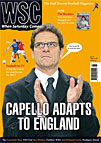 Gillingham's success in recent years has come at a cost and now the club are paying the price, writes Haydn Parry
Gillingham's success in recent years has come at a cost and now the club are paying the price, writes Haydn Parry
In a BBC Radio Kent interview in March, Gillingham chairman Paul Scally said: “We’re all judged by results in football, unfortunately. If we could take away the football, then the club is actually doing very well.”
Those damned results do tend to get in the way. Ever since he took over in 1995, Paul Scally has had a no-nonsense approach to running the Gills. Emerging from administration, the club had two promotions in Scally’s first five seasons, bringing Championship-level football to Priestfield for the very first time. All along, Scally made it clear he would brook little dissent from the ranks, calling for “a lean, well drilled ship and as skipper of this new ship I reserve the right to decide who I sail with”. Somewhat thin-skinned when it comes to criticism, his PR skills have never been the best but, all the while the Gills were winning, most fans weren’t too bothered.
There have been some notable spats, not least the spectacular fallout with manager Tony Pulis, which reached the High Court before being settled. But there were also rows with the local media, the (now independent) supporters’ club, the supporters’ trust and even with a few players – notably when former captain Paul Smith was accused of holding the player-of-the-year trophy hostage.
The collapse of ITV Digital hit the Gills, like other clubs, hard – a net loss of £4.5 million of income over two years. Yet that alone doesn’t explain an overdraft of £12.6m reached during what were effectively golden years on the pitch. Increasingly, fans see a massive overspend on Priestfield as a major cause of our woes. Scally made the renovation of the admittedly tatty old stadium a priority from very early on, looking to improve the club’s income streams from non-footballing activities. Impressive conference and banqueting facilities followed until the money dried up (the Brian Moore Stand – the away end – remains unfinished, with temporary seating in place). The club’s accounts suggest that the stadium rebuild went somewhat beyond the original budget of £3.9m, with some speculation that it could have been as much as £5m over, although no precise figure has been given.
Scally’s solution has been to transfer the stadium to a company, Priestfield Developments Limited, controlled by himself. With £9.8m of debt secured on the ground transferred to the holding company, interest will be rolled up until a new stadium can be built. If or when that ever happens, the plan is for Priestfield to be sold, and the debt to the bank will then be repaid. Scally says that anything left over will be put back into the club – although something stronger than a verbal promise will be required to allay the suspicions of the more cynical. Simon Baker, editor of Gills fanzine Brian Moore’s Head, is pessimistic: “The financial situation is such that there appears no chance of improvement on the pitch without a major injection of funds. To be honest, I see no light at the end of the tunnel.”
Meanwhile, there’s a very real prospect of a second relegation in three years. After an abominable start, manager Ronnie Jepson was fired before the end of September. His successor, Mark Stimson, was successful in non-League football with Grays Athletic and Stevenage, but a novice to management at League One level. He conducted an extensive mid-season overhaul of playing staff, bringing in eight players from non-League clubs, but without any improvement in results.
A total of 40 players used in the campaign, establishing a dubious club record, betrays the lack of stability. Then, there was sustained barracking of Scally for the first time during the spineless 3-0 home defeat to fellow strugglers Crewe in March. It brought out a typically bullish response from the chairman: “If I went tomorrow, the club would collapse,” he has told the local press. “The bank are backing me, not the club.” The following week, still seething, his programme notes were a double blank page save a line saying he was “lost for words”. He’s not the only one.
From WSC 255 May 2008